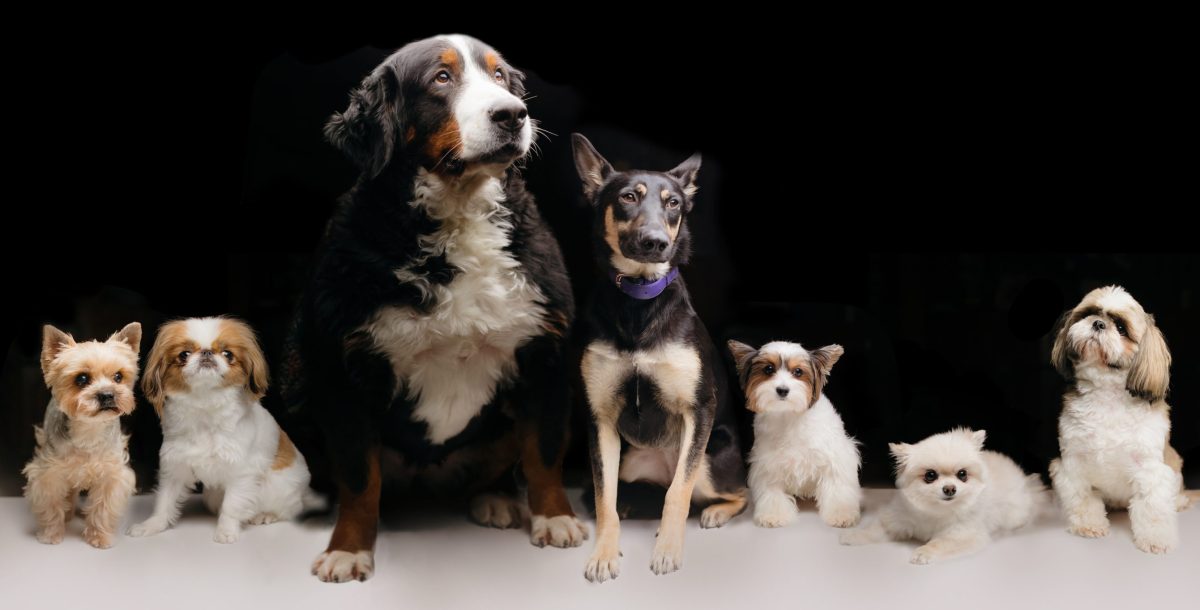In the same way that people come in many shapes and sizes, so do dogs. There are puppies who are so little that they could fit in the palm of your hand and pups that are so big that they would hardly fit in a car. The fact that your four-legged companion is smaller or larger than other dogs of the same breed and size has no impact on your love for them.
Before you can begin the process of selecting the best size for your dog, there are a couple of things you should know. Today, we’re going to conduct a deep dive into dogs of all sizes, and we will ensure that you understand how to measure them correctly!

A dog size chart can be handy in helping dog owners determine the perfect size of particular breeds for their families and homes. If you’re a first-time dog owner, it’s not uncommon for you to get carried away with the excitement of getting your new pup home and immediately start looking into buying a crate and other necessary items.
Here is a guide to help you figure out what size dog is best for you and your family.
Dog Size Chart
Have you recently taken in a stray dog as a pet? Could you have a dog that mixes several breeds? Are you still curious about the size that my new dog will reach? Stop looking; the chart you’re looking for to measure your puppy’s height and weight is right here.
The information that follows is based on the typical dimensions and weights. Always measure and weigh your dog since there is a chance that they are taller or heavier than the normal dog. The dog growth chart may also be used as a prediction of the adult size of a puppy; with it, you can determine how large your dog will be after it has reached its full maturity. 🐶
Toy Size

| Breed | Male ave weight kg | Male ave height cm | Female ave weight kg | Female ave height cm | Adult dog neck size cm | Adult dog neck size in | Recommended Collar |
| Affenpinscher | 4 | 27 | 3 | 25 | 20-28cm | 8-11″ | S |
| Brussels Griffon | 4 | 19 | 3.5 | 18 | 35-46cm | 14-18″ | S |
| Chihuahua | 2.25 | 20 | 2.25 | 20 | 20-32cm | 8-13″ | S |
| Maltese | 2.5 | 22.5 | 2 | 21 | 25-36cm | 10-14″ | S |
| Miniature Pinscher | 3.5 | 28 | 3.5 | 27 | 20-28cm | 8-11″ | S |
| Papillon | 2.5 | 27 | 2 | 24 | 20-30cm | 8-12″ | S |
| Pomeranian | 2 | 26 | 1.8 | 25.5 | 25-35cm | 10-14″ | S |
| Silky Terrier | 4 | 23 | 4 | 23 | 25-35cm | 10-14″ | S |
| Yorkshire Terrier | 3.5 | 20.5 | 2.7 | 18 | 15-30cm | 6-12″ | S |
Small Size
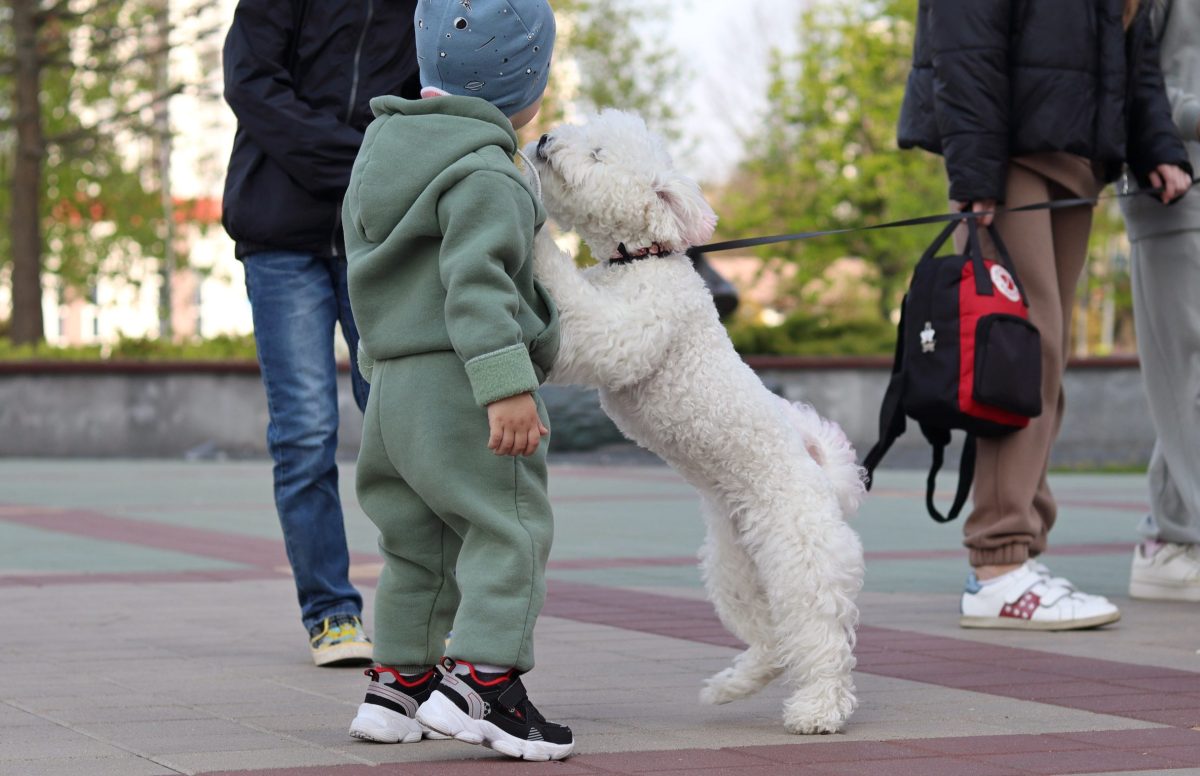
| Breed | Male ave weight kg | Male ave height cm | Female ave weight kg | Female ave height cm | Adult dog neck size cm | Adult dog neck size in | Recommended Collar |
| Australian Terrier | 6.5 | 25 | 6 | 23 | 35-40cm | 14-16″ | M |
| Beagle | 10.5 | 37 | 9.5 | 37 | 41-46cm | 16-18″ | M |
| Bichon Frisé | 5 | 27 | 3.5 | 24 | 35-46cm | 14-18″ | M |
| Border Terrier | 6.5 | 36.5 | 5.75 | 32 | 28-33cm | 11-13″ | S |
| Boston Terrier | 9 | 30 | 8 | 28 | 28-33cm | 12-18″ | S |
| Cavalier King Charles Spaniel | 8 | 32 | 6 | 28 | 25-40cm | 10-16″ | S/M |
| Cavapoo | 7.5 | 39 | 7.5 | 39 | 25-41cm | 10-16″ | S/M |
| Cesky Terrier | 7 | 35 | 6 | 30 | 35-40cm | 14-16″ | M |
| Cockapoo | 8.15 | 31.5 | 8.15 | 31.5 | 24-41cm | 10-16″ | S/M |
| Dachshund | 10.5 | 23.5 | 9 | 23.5 | 30-41cm | 12-16″ | M |
| English Toy Spaniel | 6 | 25.5 | 4 | 20.5 | 25-35cm | 10-14″ | S |
| German Pinscher | 10 | 47 | 8 | 44 | 28-33cm | 12-18″ | S |
| German Spitz | 10 | 30 | 9 | 28 | 35-40cm | 14-16″ | M |
| Jack Russell Terrier | 7.3 | 27.5 | 7.3 | 27.5 | 35-36cm | 10-14″ | M |
| Japanese Chin | 4.5 | 25 | 4 | 24 | 25-35cm | 10-14″ | S/M |
| Japanese Spitz | 6 | 33 | 5 | 31 | 28-33cm | 11-13″ | S/M |
| Kooikerhondje | 10 | 40 | 9 | 35 | 35-40cm | 14-16″ | M |
| Lancashire Heeler | 6.5 | 30 | 6 | 28 | 35-36cm | 10-14″ | M |
| Lhasa Apso | 7 | 28 | 6 | 25 | 30-40cm | 12-16″ | S/M |
| Miniature Poodle | 6 | 31 | 5 | 28 | 25-40cm | 10-16″ | S/M |
| Miniature Schnauzer | 7.25 | 33 | 6.8 | 33 | 25-41cm | 10-16″ | S/M |
| Pekingese | 4.5 | 18 | 4.5 | 18 | 30-40cm | 12-16″ | S/M |
| Pug | 7.2 | 30.5 | 7.2 | 30.5 | 30-41cm | 12-16″ | M |
| Schipperke | 7.5 | 32 | 6 | 28 | 25-35cm | 10-14″ | S/M |
| Scottish Terrier | 9 | 28 | 8.5 | 25.5 | 35-50cm | 14-20″ | M |
| Shetland Sheepdog | 9 | 37 | 8 | 35.5 | 28-46cm | 11-18″ | S/M |
| Shiba‐Inu | 10 | 39.5 | 8 | 36.5 | 35-43cm | 14-17″ | M |
| Shih Tzu | 5.625 | 24 | 5.625 | 24 | 35-42cm | 14-16.5″ | M |
| Smooth Fox Terrier | 7.5 | 39.5 | 6.5 | 38 | 35-40cm | 14-16″ | M |
| Toy Poodle | 4.5 | 25 | 4 | 24 | 20-35cm | 8-14″ | S/M |
| Welsh Terrier | 9.5 | 39 | 9 | 38 | 35-43cm | 14-17″ | M |
| West Highland White Terrier | 8.5 | 28 | 7.5 | 27 | 35-40cm | 14-16″ | M |
| Wire Fox Terrier | 8 | 39 | 7 | 38 | 35-40cm | 14-16″ | M |
Medium Size
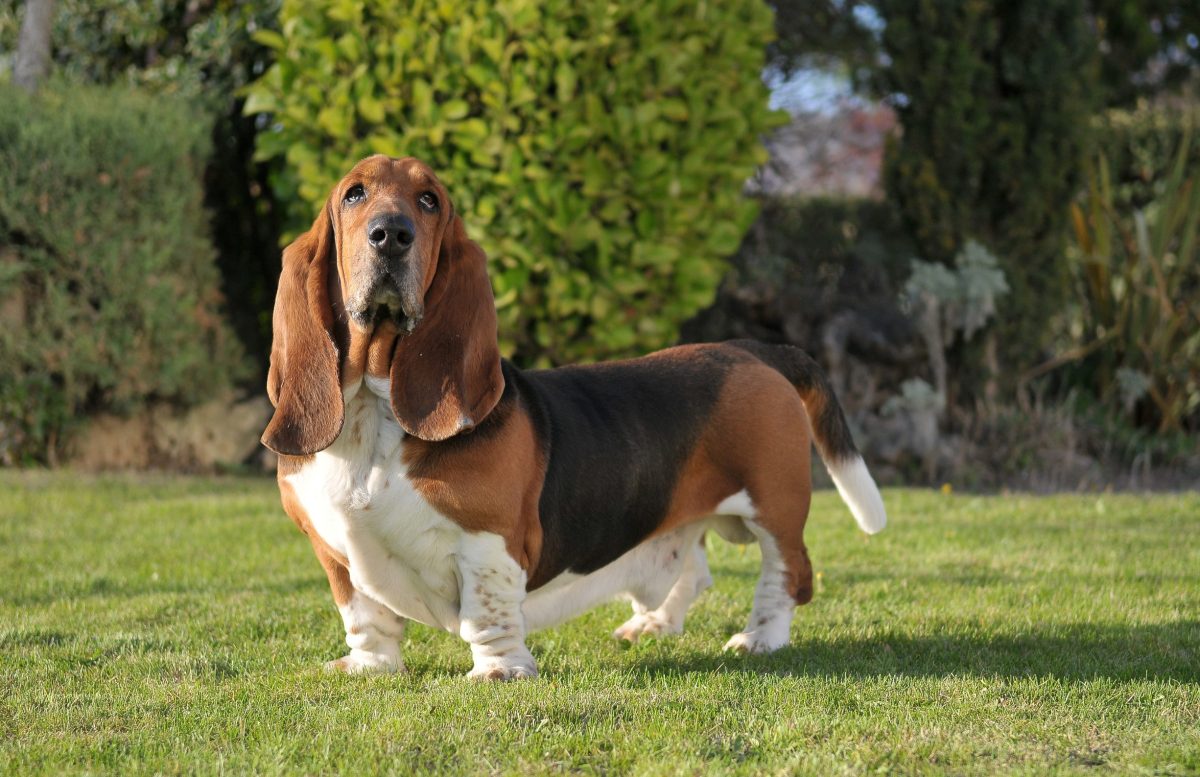
| Breed | Male ave weight kg | Male ave height cm | Female ave weight kg | Female ave height cm | Adult dog neck size cm | Adult dog neck size in | Recommended Collar |
| Airedale Terrier | 21.5 | 60 | 20 | 56 | 40-56cm | 16-22″ | M/L |
| Basenji | 12.5 | 44.5 | 10 | 41 | 25-35cm | 10-14″ | S/M |
| Basset Fauve de Bretagne | 17 | 35 | 15 | 32.5 | 41-46cm | 16-18″ | M |
| Basset Hound | 22 | 35.5 | 18.5 | 31.5 | 40-56cm | 16-22″ | M/L |
| Border Collie | 17 | 52 | 15.5 | 49.5 | 41-46cm | 16-18″ | M |
| Brittany | 15 | 49 | 13 | 48 | 35-40cm | 14-16″ | M |
| Cardigan Welsh Corgi | 11 | 30 | 10 | 28 | 35-40cm | 14-16″ | M |
| Chinese Shar‐Pei | 19 | 48 | 17 | 46 | 40-50cm | 16-20″ | M |
| Cocker Spaniel | 12 | 38 | 11 | 35 | 30-45cm | 12-18″ | S/M |
| Elkhound | 23 | 52 | 20 | 49 | 40-45cm | 15-18″ | M |
| English Cocker Spaniel | 13.75 | 40 | 13.75 | 38 | 30-46cm | 12-18″ | S/M |
| English Springer Spaniel | 24 | 48.5 | 18 | 45.5 | 36-46cm | 14-18″ | M |
| Finnish Lapphund | 21 | 51 | 20 | 46 | 40-50cm | 16-20″ | M |
| Finnish Spitz | 18 | 45 | 15 | 42 | 35-50cm | 14-20″ | M |
| French Bulldog | 12.5 | 30 | 11 | 30 | 30-41cm | 12-16″ | M |
| Ibizan Hound | 25 | 60 | 19 | 56 | 33-46cm | 13-18″ | M |
| Irish Terrier | 12 | 48 | 11.5 | 46 | 40-50cm | 16-20″ | M |
| Kerry Blue Terrier | 16 | 47 | 16 | 46 | 35-40cm | 14-16″ | M |
| Norwegian Lundehund | 15 | 38 | 14 | 35 | 41-46cm | 16-18″ | M |
| Pembroke Welsh Corgi | 11 | 30 | 10 | 18 | 35-40cm | 14-16″ | M |
| Petit Basset Griffon Vendeen | 18 | 36 | 17 | 35.5 | 35-50cm | 14-20″ | M |
| Pharaoh Hound | 24 | 56 | 20 | 53 | 25-35cm | 10-14″ | S/M |
| Polish Owczarek Nizinny | 19.5 | 50 | 18 | 45 | 40-56cm | 16-22″ | M/L |
| Puli | 15 | 44 | 12 | 40 | 40-56cm | 16-22″ | M/L |
| Saluki | 24 | 65 | 19 | 57 | 33-46cm | 13-18″ | S/M |
| Samoyed | 23 | 55 | 18 | 49 | 40-50cm | 16-20″ | M |
| Siberian Husky | 23.5 | 60 | 19.5 | 53.5 | 40-56cm | 16-22″ | M/L |
| Skye Terrier | 11.5 | 26 | 11 | 25 | 40-50cm | 16-20″ | M |
| Sloughi | 13 | 70 | 12 | 65 | 35-45cm | 14-18″ | M |
| Soft Coated Wheaten Terrier | 20 | 48 | 16 | 45.5 | 45-55cm | 18-22″ | M/L |
| Staffordshire Bull Terrier | 15 | 38.5 | 13.2 | 35.5 | 45-60cm | 18-24″ | M/L |
| Standard Schnauzer | 18 | 48.5 | 16 | 45.5 | 35-50cm | 14-20″ | M |
| Tibetan Terrier | 13 | 38 | 11 | 35 | 40-50cm | 16-20″ | M |
| Whippet | 14.1 | 49.5 | 14.1 | 45.5 | 33-38cm | 13-15″ | S/M |
Large Size
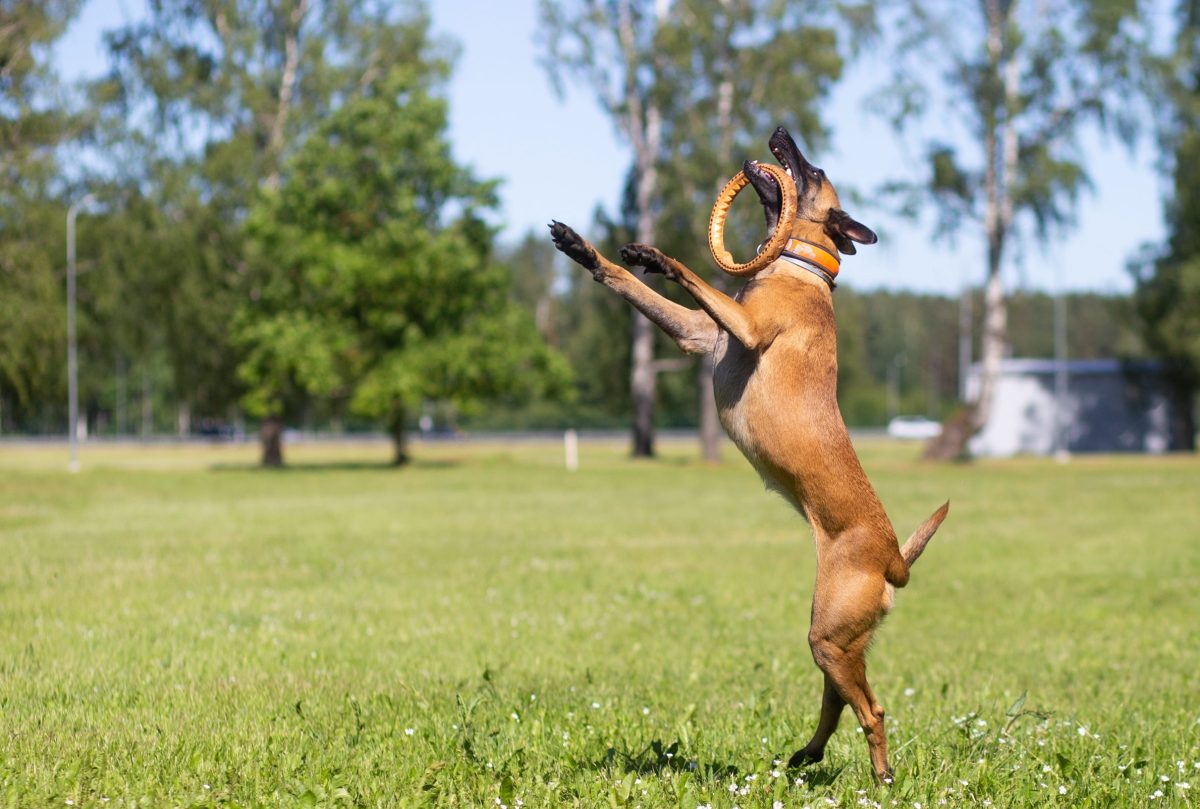
| Breed | Male ave weight kg | Male ave height cm | Female ave weight kg | Female ave height cm | Adult dog neck size cm | Adult dog neck size in | Recommended Collar |
| Afghan Hound | 27.5 | 72 | 23 | 66 | 40-56cm | 16-22″ | L |
| Australian Shepherd | 30 | 57 | 25 | 48 | 40-56cm | 16-22″ | L |
| Bearded Collie | 26 | 55 | 22 | 52 | 45-56cm | 18-22″ | M/L |
| Belgian Sheepdog | 28 | 65 | 27 | 56 | 46-60cm | 18-24″ | M/L |
| Bergamasco | 37 | 62 | 28 | 57 | 46-60cm | 18-24″ | M/L |
| Bernese Mountain Dog | 44 | 70 | 40 | 65 | 50-66cm | 20-26″ | L |
| Bloodhound | 41 | 66 | 36 | 60 | 56-70cm | 22-28″ | L |
| Borzoi | 41 | 74 | 34 | 68 | 40-45cm | 16-18″ | M |
| Bouvier des Flandres | 38 | 65 | 33 | 63 | 56-66cm | 22-26″ | L |
| Boxer | 31 | 60 | 26 | 56 | 41-56cm | 16-22″ | L |
| Briard | 38.5 | 65 | 34 | 60 | 40-45cm | 16-18″ | M |
| Bull Terrier | 33 | 45 | 30 | 42 | 30-45cm | 12-18″ | M |
| Canadian Eskimo Dog | 46 | 64 | 37 | 57 | 50-66cm | 20-26″ | L |
| Chow Chow | 27 | 52 | 25 | 48 | 45-61cm | 18-24″ | M/L |
| Collie | 29 | 58 | 22 | 56 | 45-56cm | 18-22″ | M/L |
| Dalmatian | 24 | 59.5 | 24 | 57 | 41-50cm | 16-20″ | M |
| Deerhound | 45.5 | 76 | 36.5 | 71 | 50-66cm | 20-26″ | L |
| Doberman Pinscher | 37.5 | 69 | 33 | 65 | 45-61cm | 18-24″ | L |
| English bulldog | 24.5 | 35.5 | 22.5 | 35.5 | 46-61cm | 18-24″ | L |
| English Foxhound | 30.5 | 64 | 30.5 | 64 | 41-46cm | 16-18″ | M |
| English Setter | 28 | 67 | 27 | 62 | 45-61cm | 18-24″ | L |
| Estrela Mountain Dog | 45 | 70 | 35 | 65 | 50-66cm | 20-26″ | L |
| German Shepherd Dog | 35 | 62.5 | 27 | 57.5 | 46-61cm | 18-24″ | L |
| German Shorthaired Pointer | 28.5 | 61 | 23.5 | 56 | 38-43cm | 15-17″ | M/L |
| German Wirehaired Pointer | 33 | 65 | 28 | 60 | 46-60cm | 18-24″ | L |
| Giant Schnauzer | 45.5 | 68 | 34 | 63 | 50-66cm | 20-26″ | L |
| Golden Retriever | 31.5 | 58.5 | 27 | 53.5 | 45-53cm | 18-21″ | M/L |
| Gordon Setter | 29.5 | 66 | 25.5 | 63 | 41-56cm | 16-22″ | L |
| Great Gascony Blue | 33.5 | 70 | 32 | 68 | 40-56cm | 16-22″ | L |
| Greyhound | 36.5 | 74 | 35 | 72 | 35-45cm | 14-18″ | M/L |
| Hamiltonstövare | 26 | 55 | 24 | 50 | 41-50cm | 16-20″ | M |
| Harrier | 27 | 53 | 22 | 48 | 45-56cm | 18-22″ | L |
| Hovawart | 35 | 68 | 30 | 60 | 50-66cm | 20-26″ | L |
| Irish Red and White Setter | 29.5 | 65 | 25 | 61 | 40-56cm | 16-22″ | L |
| Irish Setter | 30.5 | 65 | 26 | 61 | 40-56cm | 16-22″ | L |
| Italian Greyhound | 27 | 57 | 19 | 52 | 33-46cm | 13-18″ | M |
| Labradoodle | 25 | 50.5 | 25 | 50.5 | 41-50cm | 16-20″ | M |
| Labrador Retriever | 32.5 | 58.5 | 28.5 | 58.5 | 46-60cm | 18-24″ | L |
| Large Munsterlander | 28 | 61 | 35 | 59 | 50-66cm | 20-26″ | L |
| Leonberger | 50 | 80 | 36 | 65 | 50-66cm | 20-26″ | L |
| Maremma Sheepdog | 42 | 72 | 40 | 68 | 50-66cm | 20-26″ | L |
| Old English Sheepdog | 36.5 | 64 | 29.5 | 59 | 46-61cm | 18-24″ | L |
| Pointer | 29.5 | 65 | 26 | 64 | 41-56cm | 16-22″ | M/L |
| Rhodesian Ridgeback | 36 | 65 | 32 | 64 | 50-58cm | 20-23″ | L |
| Spinone Italiano | 38 | 65 | 31 | 63 | 41-56cm | 16-22″ | L |
| Standard Poodle | 32.5 | 41.5 | 26.5 | 41.5 | 30-45cm | 12-18″ | M |
| Vizsla | 25 | 60 | 21.5 | 57 | 38-66cm | 15-18″ | M/L |
| Weimaraner | 34.5 | 65.5 | 28.5 | 60.5 | 41-56cm | 16-22″ | M/L |
Giant Size
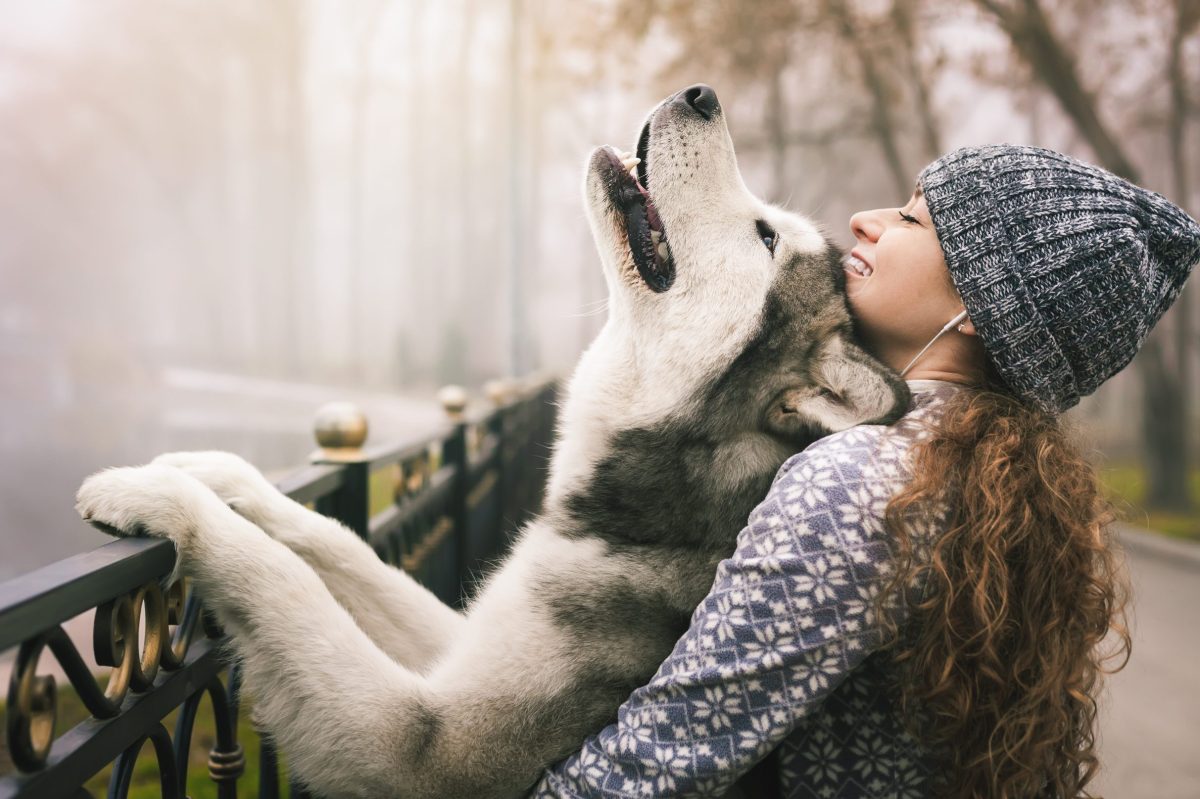
| Breed | Male ave weight kg | Male ave height cm | Female ave weight kg | Female ave height cm | Adult dog neck size cm | Adult dog neck size in | Recommended Collar |
| Akita | 35.5 | 67 | 34 | 61 | 51-61cm | 20-24″ | L |
| Alaskan Malamute | 38 | 70 | 33 | 63 | 38-56cm | 38-56″ | L |
| Anatolian Shepherd | 58 | 80 | 49 | 78 | 70-96cm | 28-38″ | NA |
| Bullmastiff | 55 | 68 | 46 | 64 | 60-72cm | 26-28″ | L |
| Great Dane | 70 | 82 | 62 | 76 | 51-66cm | 20-26″ | L |
| Irish Wolfhound | 55 | 85 | 45 | 78 | 50-69cm | 20-27″ | L |
| Komondor | 50 | 70 | 48 | 64 | 50-66cm | 20-26″ | L |
| Kuvasz | 50 | 70 | 38 | 67 | 50-66cm | 20-26″ | L |
| Mastiff | 83 | 75 | 80 | 72 | 71-97cm | 28-38″ | NA |
| Neapolitan Mastiff | 70 | 78 | 66 | 73 | 50-66cm | 20-26″ | L |
| Newfoundland | 68 | 71 | 54 | 66 | 66-81cm | 26-32″ | NA |
| Otterhound | 50 | 67 | 45 | 60 | 50-66cm | 20-26″ | L |
| Rottweiler | 55 | 65 | 41.5 | 59.5 | 61-76cm | 24-30″ | L |
| Saint Bernard | 75 | 90 | 68 | 88 | 66-82cm | 26-32″ | NA |
| Tibetan Mastiff | 68 | 66 | 50 | 62 | 71-97cm | 28-38″ | NA |
What Do Different Dog Sizes Mean?
While planning to adopt a dog or shopping for things for your four-legged buddy, the sizing instructions can sometimes be confusing. This is especially true when adopting a dog. In most circumstances, though, you will be provided with a guide analogous to the one designed for humans, including standard sizes. The most critical factor in determining what size your.
Toy
The toy dog got its name because they frequently have a size comparable to that of a plush toy animal. Toy dogs are often standard breeds that have been carefully bred down to a smaller size. Some breeds considered toy dogs include spaniels, terriers, and pinschers. In most cases, their weight will be close to or even below the 6-kilogram barrier.
Throughout history, most dogs were developed to do specific tasks, which is still the case for several toy breeds today. However, most of them were raised to be loyal companions to human beings. Several toy dog breeds are frequently described as lapdogs. This indicates that it is in their nature to sit comfortably on someone’s lap all day due to their small size and a submissive, passive demeanor that will satisfy sitting and dozing off.
Small
If you think of a dog on the smaller end of the canine spectrum, the picture that most often comes to mind is that of a Chihuahua. If that’s the case, you’ve got it right on the money because they’re one of the most sought-after little breeds.
These little dogs may be small, but they have beautiful personalities despite their diminutive stature. This may sometimes lead to behavioral concerns, as they can become reasonably aggressive toward other dogs or humans if they are not properly socialized. This can happen if they need to be properly socialized.
The majority of health problems seen by many little dogs are the result of breeding problems. These problems are passed down via the lineages of certain breeds. Therefore, small purebred dogs nearly always have some medical condition. The smaller these breeds are designed to be, the more likely they will have health problems.
Medium
The size of a medium dog is considered in-between, and even though many people don’t realize it, most people want this medium puppy. Dogs of this size typically have an appropriate amount of energy; they are neither overly active nor overly lethargic. They don’t get too big, which means they are easy to control and don’t stay so small that they can’t keep up with you when you’re outside in the fresh air.
This is the most comprehensive classification of dog breeds, and as a consequence, there is a wide range of potential health issues that can arise. Some dog breeds, like bulldogs, are prone to developing respiratory issues, while others are more likely to develop hip problems.
It is also essential to point out that the most significant number of available working dogs can be found in the grouping of dogs considered to be medium in size. These dog breeds are frequently seen working as therapy dogs or in other capacities as service dogs.
Large
These puppies are starting to mature into their adult bodies! Even though they are aware of their size, large dogs are capable of causing quite a bit of harm. Most of the time, these puppies have the misconception that they are lap dogs and should be sitting on the couch with their closest companion.
Regarding their demeanor, most big dogs are outgoing and enthusiastic about making new acquaintances. As a result of this, they are suitable for use as working dogs. Because their size might be frightening, they make excellent guard dogs if adequately trained.
Large dogs have a higher risk of developing joint problems than smaller dogs, particularly those that affect their hips and spines. Checkups at regular intervals are required for these puppies to maintain everything in the correct position.
Giant
They do reach sizes comparable to those of the giant breeds. These are your larger dogs, requiring a separate sleeping area. These puppies have very outgoing personalities but are also quite protective. They are incredibly enormous and may even overpower breeds of a similar size.
These dogs are hyperactive and are only sometimes aware of their power. If you have not taught them properly, you could find they want to stroll with you rather than themselves. Even though their power puts them at risk of injuring people of lesser stature or children, big canines tend to have a pleasant disposition.
In terms of musculoskeletal disorders, giant dogs suffer from the same problems that tiny dogs do and hereditary problems caused by breeding, much like their smaller counterparts. When acquiring a giant dog, it is essential to keep this in mind since it is significant.
Five Pointers for Estimating Your Dog’s Age
It might be challenging to determine the age of shelter dogs since the animals typically only arrive with a significant amount of background information. However, having access to this information is necessary to deliver the best possible treatment.
Examining the teeth of a young dog is the most accurate technique to estimate its age. A puppy’s primary (baby) teeth eruption should be complete between 3 and 6 weeks. At the front of the mouth, the eruption of the puppy’s permanent (adult) teeth should start between 12 and 16 weeks, and at the back of the mouth, between 16 and 24 weeks.
The best person to provide an estimate of your dog’s age is, of course, your veterinarian; nevertheless, the following guidelines might assist you in making an educated approximation. Bear in mind that only some of these suggestions can guarantee success.
Keep an eye out for graying signs
One of the most frequent reasons for pet graying is the passage of time. This process is remarkably comparable to the one occurring naturally as people age. On the other hand, in contrast to people, dogs often do not become gray all over their bodies, including their fur. The beard and mustache will be the first areas to become gray, followed by the rest of the face and muzzle. In dogs, graying typically begins with a “salt and pepper” appearance on the coat.
You may have difficulty recognizing the indications of aging in naturally gray dogs, but this only means you will need to keep a closer eye on them. As your dog grows, you might notice that the texture of its fur has changed from how it used to be. This is because it’s common for the texture of a dog’s coat to change as they get older. Additionally, as they age, gray dogs may show more white than gray in their coats.
Analyze the Behavior of Your Dog
Dogs who are highly active, lively, and spasmodic are often much younger, leading us to a prognosis closer to one or two years of age than five or six years.
Activity levels typically decrease as dog ages, which is a common phenomenon. They could have problems getting up or down, trouble walking or climbing stairs, and might sleep more than they usually would due to these difficulties. Age-related changes in a dog’s sleep habits can include waking up in the middle of the night or starting to have accidents inside the house.
Canine cognitive dysfunction is a disorder that affects certain canines and causes symptoms similar to those seen in senile people. These canines are prone to amnesia, confusion, and an apparent state of depression.
Look into your dog’s eyes for some insight.
The lens, the eye component responsible for refracting and focusing light, begins to alter as a dog ages. This harmless ailment, known as lenticular sclerosis, often manifests itself in dogs between the ages of 6 and 8. When it comes to estimating the ages of middle-aged and senior dogs can be of tremendous assistance.
It is important to distinguish between cataracts, a serious eye disease that can cause blindness and is characterized by a cloudy lens, and the condition known as lenticular sclerosis. However, cataracts are not always found in older canines. Some dog breeds, such as Boston Terriers, French Bulldogs, & Staffordshire Bull Terriers, are genetically susceptible to developing cataracts in their eyes at a very young age, even before they reach the age of 2 years old.
Examine the state of your teeth.
Dogs, like humans, only have two sets of teeth: the infant set and the adult set. When a person is still in their late childhood or early adolescence, their permanent teeth start to come in. This development phase occurs throughout the first half year of a dog’s life.
After then, it might be difficult to determine age based on teeth alone. Once all of the permanent adult teeth have come in, they can only change by accumulating tartar, stains, or other indicators of illness over time. Depending on the dog’s face shape, breed history, diet, and dental care received, these changes can happen at various rates.
There is no reliable method for estimating a dog’s age based on its dentition once all of the adult teeth have come in for a dog. The teeth of a dog that is 15 years old and has received proper dental care may look healthier than those of a dog that is 5 years old and is allowed to chew on hard toys.
What kind of shape is your dog in?
Puppies tend to be more svelte, fit, and flexible, but elderly dogs frequently put on weight. It is customary to put on weight during the middle years of a person’s life. However, as a person age, they typically lose weight, and their muscular tone weakens.
This is mostly because as dog’s age, they have a tendency to become less active, have a tendency to snooze more frequently, and have a slowing in their metabolism.
The development of a more significant number of aches and pains is something that dogs and people have in common as they age. As a result of the fact that most dogs remain highly active throughout their lives, it is reasonable to anticipate that as they age, they may have some joint stiffness in addition to the possibility of experiencing pain or discomfort.
What Size Will My Puppy Become?
When adopting a puppy, people frequently have many questions, such as “how big will my furry friend be when they grow up?” When do puppies reach the stage where their growth is no longer stimulated? How big will my adult dog be when he’s fully grown?
A quick search on Google will only sometimes provide the information you are looking for as soon as you would want them, particularly in the case of mixed-breed and designer dogs.
Several different variables may determine your tiny dog’s eventual size. A few approaches may be used to accurately estimate a puppy’s future development and full size, even though it is impossible to predict a puppy’s adult weight and height precisely.
Step 1. Find out how much your new dog weighs.
This may be determined with the use of a baby scale or at a visit to the veterinarian. If this is not an option, on the other hand, you can use a regular scale in the bathroom to determine how much your puppy weighs.
- Check the bathroom scale twice to be sure it is set to zero before you start.
- Take your new puppy in your hands and handle it with care. Try not to drop it since it might sustain an injury if it falls to the ground. It could wiggle about.
- Step onto the scale and wait for it to finish calculating your weight before you get off. Make sure the number is correct, then write it down.
- Reward your dog if he refrains from making an effort to jump.
- Make your way up the ladder on your own.
- Record your weight once you’ve done so.
- To find out how much the pups weigh, take your weight and deduct it from the total weight you were given for both you and the puppy.
Step 2: Determine the breed of your new puppy
You can accomplish this goal by requesting a DNA test or seeking the advice of a veterinarian. If you do not have quick access to this information, you can estimate the approximate breed of the animal by analyzing its physical qualities, such as the following:
- Snout length
- Fur color
- Fur length
- Skull shape
- Weight
- Tail characteristics
After you’ve completed these steps, you may use our dog size chart to determine the breed of the dog using its measurements.
Step 3: Determine the approximate age of your new dog in months.
To accomplish this, all you need to do is inquire about it at the animal shelter or breeder from where you purchased the puppy, and they will be able to provide it for you. You might also read through what was discussed earlier.
Step 4: Use a dog-size chart
Using the information gathered above, our dog-size chart will assist you in making an educated guess as to how big your puppy will be as an adult. They evaluate their current size about the historical averages of other dogs of the same breed.
FAQs
Does it matter how big a dog is to them?
Although it may be simpler to exercise a tiny dog in a smaller place, a smaller dog may need more time than a giant dog since she may have more energy overall. Many smaller breeds have relatively “big” and concentrated personalities, requiring more cerebral stimulation than a giant dog would.
Do a dog’s paws influence its size?
If your puppy is born with abnormally tiny feet, it will likely remain on the more petite side as adults. However, the size of your dog’s paws, while it can be a fair predictor of whether or not your dog’s growth spurt has finished, does not tell you how much larger your dog will be.
Are larger dogs calmer?
Again, there was a substantial difference based on the size of the dogs, with the smaller canines exhibiting a considerably higher level of dread and anxiety than the larger dogs. Small dogs appear less obedient, more energetic and aggressive, and more susceptible to anxiety and fear.
Does the mother or father determine the size of the dog?
There is no way to determine with confidence which parent, the father or the mother, is accountable for what proportion of the puppy’s physical characteristics. Everything will be determined by how the genes work out in the end. This suggests that the puppy may resemble either its mother or its father.

